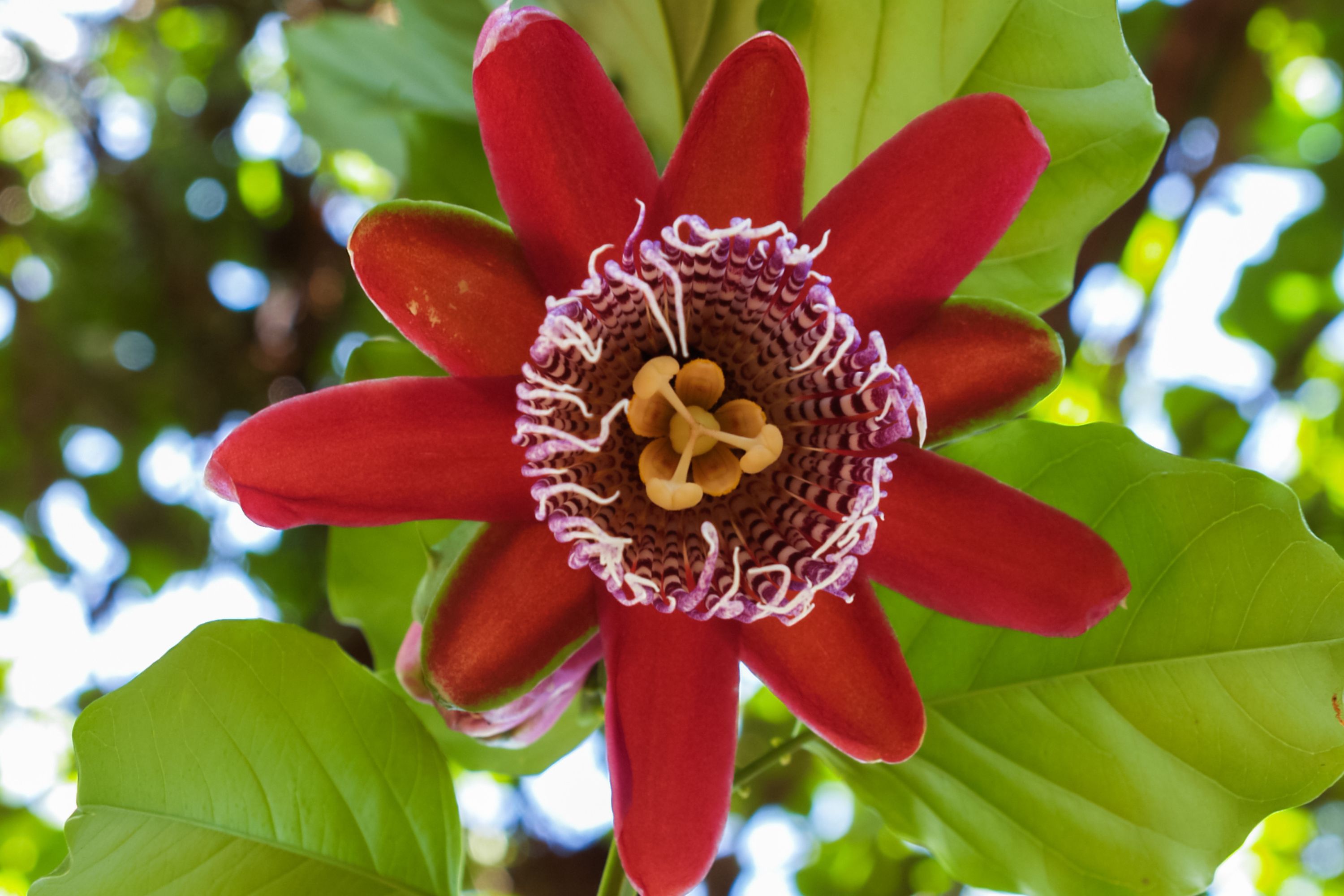Winged-stem passion flower
(Passiflora alata)

Description
Passiflora alata, the winged-stem passion flower, is a species of flowering plant. It is an evergreen vine, growing to 6 m (20 ft) or more, which bears an edible type of passion fruit. It is native to the Amazon, from Peru to eastern Brazil. The leaves are oval or oblong, 10–15 cm (4–6 in) long and 1–10 cm (0–4 in) wide. The fragrant flower is 7–10 cm (3–4 in) wide, with red curved tepals, and a prominent fringed corona in bands of purple and white giving the appearance of stripes. It usually blooms around late summer or early fall, needing full sun exposure. P. alata attracts bees, butterflies and birds. The solitary fruit is highly prized by local people. It is egg-shaped, yellow to bright orange, 8–15 cm (3–6 in) long and 5–10 cm (2–4 in) in diameter. It weighs from 90–300 g (3–11 oz). In Brazil, P. alata is officially recognized as a phytomedicine, and was included in first edition of Brazilian Pharmacopoeia in 1929. It is well known in folk medicine throughout South America, though the exact pharmacological composition of the plant is little understood and requires more study.
Taxonomic tree:







